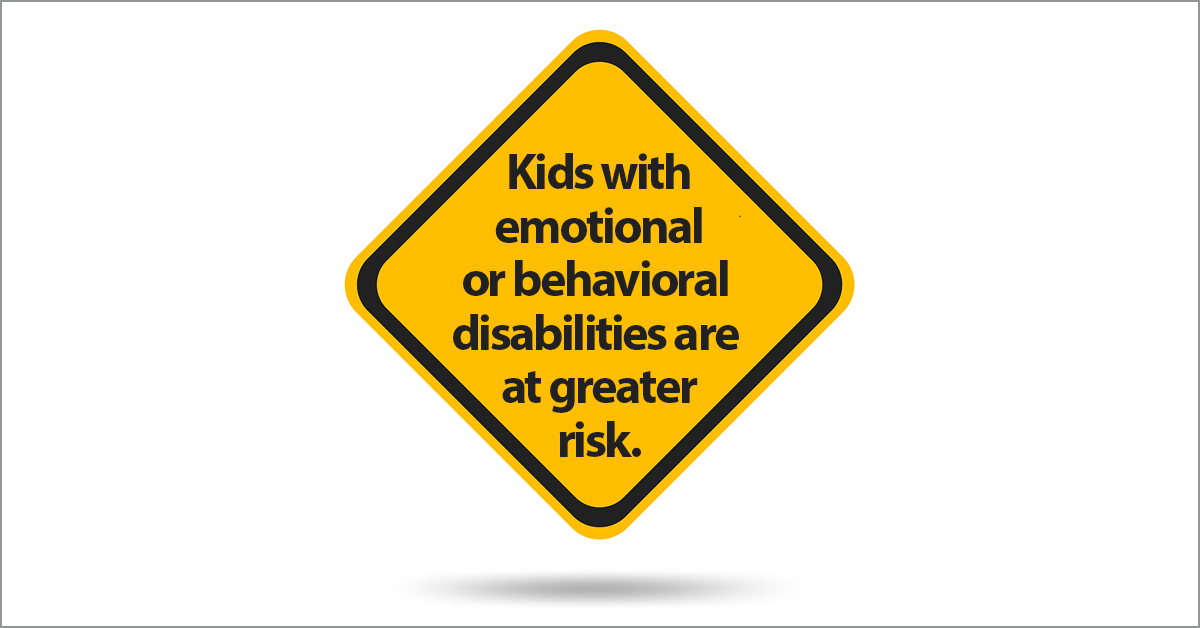By Jayne M. Wesler, Esq.
Studies show that children with disabilities, particularly those with emotional or behavioral disabilities, have a significantly higher risk of injury than those with no disabilities. Children with special needs experience the same types of injuries as other children, but with more frequency. So, with the spotlight on safety this month, it’s especially important to ask what safety awareness means for children with special needs and to focus on how preventive measures can help lower the risk of injury for your child.
A study published in the American Journal of Public Health assessed injuries among children in the United States. The authors, Sara A. Sinclair, and Huiyun Xiang, found that the causes of the increased risk may include:
• Motor skill deficits
• Impaired causal reasoning
• Impaired mental processing
• Physical limitations
• Behavioral or emotional impairments
• Compromised adaptability
• Side effects of medications
Tips to Prevent Accidents Before They Happen
• Tailor safety information to each child’s functional impairment and cognitive level.
• Openly discuss these issues with your school officials, teachers, therapists, your IEP team, and your child.
• Ensure your child’s particular needs are met in the classroom, at home, and in the community. For example, safe seating in a wheelchair and for children with mobility issues is essential. For children with behavioral issues, adequate supervision and environmental safeguards should be included.
• Transfer planning (bus to building, classroom to classroom, community settings) should ensure safety and supervision.
• Create and practice an emergency evacuation plan for home and school.
• Notify police and fire department if you have a child with special needs.
Appropriate planning, education, and supervision can help prevent injuries.
Stranger Danger
• Talk with your child about the concept of “stranger.”
• Point out that not all strangers are dangerous, and that it may not be possible to tell the difference.
• Explain that we don’t trust people if we don’t know them.
• Use examples that you come across in your daily life, like the cashier at the supermarket and the man who runs in the neighborhood.
• Help them understand the difference between friendliness and intrusive, manipulative behavior.
Warn them against the common ways to lure a child, including:
• Asking for directions or other questions
• The use of an animal to gain the child’s trust
• Offering a ride
• Offering money
• Offering a food reward such as candy
• Do role-play with your child, practicing possible scenarios to strengthen their ability to shut down inappropriate interactions.
Safe Sex
While introducing this topic may be controversial, it’s important to take stock of the reality of sexual activity among young people. In 2017, according to statistics from the Centers for Disease Control and Prevention, 42% of never-married female teenagers and 38% of never-married male teenagers reported they’d had sexual intercourse. That’s why it’s important, regardless of moral or religious codes, to educate young people about safety in sexual activity.
But what about kids with special needs? How can we prepare them for this milestone or protect them from imposed and unwanted sexual advances?
We educate them in accordance with their developmental ability. Learn what information is age-appropriate for your child’s level. Communicate with them in simple and clear ways the basic information you want them to know. Include:
• How the body works
• What dating is about
• Who can see and touch their private parts and when and how that can happen
• How pregnancy occurs and how to prevent it
• How sexually transmitted diseases are spread and how to prevent them
• The physical and psychological benefits of abstinence at their age
• How to deal with peer pressure
Warm Weather = Special Safety Awareness
The advent of summer and its halcyon days also brings with it the increased risk of injury. Children with disabilities are especially susceptible to heat stroke, burns, and drowning. Children with special needs may take medication that makes them more likely to dehydrate, to be more sensitive to the sun’s rays, or to have difficulty regulating body temperature. Children with asthma, chronic lung disease, or other health issues may be more susceptible to the heat of the day and the air quality.
Despite these sensitivities, adults and the children themselves can take these steps to prevent unnecessary injury:
Prevent Heat Stroke:
• Stay in an air-conditioned space during the heat of the day.
• Stay hydrated with water or other fluids but avoid caffeinated or sugary drinks.
• If venturing outside, drink fluids 30 minutes in advance.
• Prior to going outside in the sun, apply sunscreen. Reapply every two hours if swimming or perspiring.
• Wear protective clothing, including loose-fitting attire and a wide-brimmed hat.
• Eat smaller, more frequent meals.
• Be prepared! Pack a cooler with water, ice, food, and any medication or other supplies that might be needed.
Recognize Heat Stroke in Your Child:
• High body temperature
• Dry skin
• Absence of perspiration
• Hot, red skin
• Rapid pulse
• Difficulty breathing
• Strange behavior
• Agitation
• Seizure
• Coma
Get help immediately if you suspect heat stroke. Call 911!
Prevent Burns:
Apply appropriate sunscreen in advance of outdoor activity and as necessary as long as the activity continues.
Be aware of any skin sensitivities your child may have, especially if they have spina bifida. Metal frames of wheelchairs, wheelchair cushions, and other objects can cause burns and skin breakdown.
Ensure Water Safety:
• It takes only a minute for any child to drown. Children with special needs are especially vulnerable. Never leave a child unattended near water.
• Do not leave a child parked in a wheelchair near a pool or body or water.
• Ensure your pool or hot tub is equipped with safety fencing and even motion detectors and alarm if your child’s condition warrants it.
• If taking a child on a boat, kayak, or canoe, ensure they wear a properly fitted life vest.
If you need help to ensure that your child’s IEP contains appropriate safety accommodations, modifications, and instruction, please call the attorneys at Sussan, Greenwald, & Wesler at 609-409-3500. We are here to serve you.


